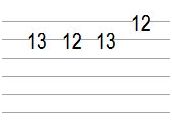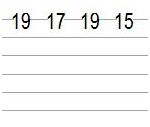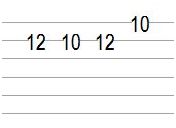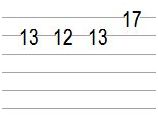How To Play Badass Guitar Solos Part Four: Making Notes Sound Emotional Over Any Chord
by Tom Hess
Generating tons of emotion with a single note is a cool way to make your solos more emotional... BUT if you want to play truly intense, passionate guitar solos you need to expand from this concept to make every LICK sound highly emotional.
Before you read further: To fully understand the concepts in this article, it’s essential that you have already read the 3rd entry of this series about playing emotional lead guitar solos .
To get the most emotion out of each guitar lick in your solos, you need to notice how every note functions when played over specific chords. Because every note you play in a solo functions differently over different chords, you can change the way a lick feels by using different notes in combination. For instance, if you are using the notes G, A flat, and D flat over an F minor chord, every note will have a unique function (G = second, A flat = third and D flat = sixth). If you replace the D flat note with an F note (the root), the F note will function differently and completely alter the way the lick feels as a whole.
This can be understood best by thinking of different notes as different colors in your palette. Whenever you use a certain note over a certain chord, you are limited to creating only one emotion (based on that note’s function when combined with that chord). When this one note is combined with many other notes, it is the same as mixing the colors of your palette to produce a completely NEW color (like mixing yellow and blue to make green). You are already familiar with the idea that changing a few notes in a small lick will produce an entirely new emotional feeling... now you understand why this occurs.
To hear precisely what this sounds like, watch this guitar phrasing video .
To begin implementing this idea into the licks of your guitar solos, play the .mp3 samples below and use the instructions I made for you. Keep in mind that each sample has been recorded for an entire minute in order to make it easier to complete the steps below:

Lick #1 ( Hear It )

Lick #2 ( Hear It )

Lick #3 ( Hear It )

Lick #4 ( Hear It )
Step 1 –Listen to the first sample lick and play this chord progression above it:
G major - E minor - A minor - C major
(Play each chord several times to give yourself enough time to understand the emotion created by each note.)
Step 2 –Think about how each note in the lick is functioning over the chords you played. This is crucial for helping you understand WHY a specific lick feels the way that it does. By knowing the specific function of each note (over a specific chord), you can recreate the same feeling of that note in other soloing scenarios. This is massively more beneficial to know as a musician than merely knowing that “Lick X sounds cool when its played over Chord Y”.
Learn more about how to use music theory to get help with understanding the previous step.
Step 3 –Complete the first two steps again by playing the chord progression from step one over the remaining licks.
Step 4 –Go back and repeat the first two steps again. Instead of using the chord progression from step one, play these chord progressions over the licks they specify from above:
Play over guitar lick one: A minor – E minor - G major - C major
Play over guitar lick two: G major - F major - A major - E major
Play over guitar lick three: C major - G major - A minor - F major
Once you have completed all four steps, you’ll be able to easily understand how the notes you play transform the emotional expression of your guitar licks. It is very critical for you to frequently pay close attention to the note choices you make in your solos. By doing this, it will start to feel natural for you to express your exact feelings through your music – instead of just playing random licks and waiting for something to sound cool (a common mistake made by many guitar players).
You’ll have an easier time expressing yourself on guitar, once you can turn mediocre guitar licks into killer lead guitar licks using the concepts of this article with creative phrasing ornaments.
After mastering the ability to make any note you play sound highly expressive while staying in control of the feeling each note produces in the music, your guitar soloing will sound more creative than ever before.
To learn even more ways to play unique, expressive guitar solos, read this page on how to create strong emotions in your guitar playing .
Tom Hess is a successful professional guitar player, composer and international guitar teacher. He also helps musicians learn guitar online and reach their guitar playing goals. Visit his rock and metal guitar lessons site to read more articles about guitar playing , plus get free guitar tips and guitar playing resources .

